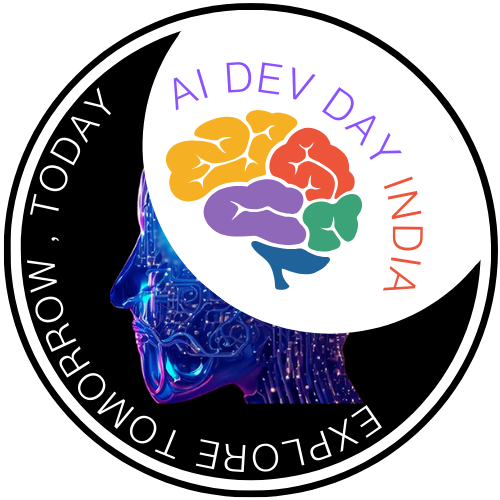5 Surprising Truths About Oracle's Enterprise AI Playbook
Enterprises are rushing to adopt AI, but the reality behind the hype is a battle against fragmentation. From siloed data and disparate technologies to the resulting employee burnout and soaring costs, the core challenge is complexity. These pain points can stall innovation and undermine even the most ambitious AI initiatives.
Amidst this complexity, a deep dive into Oracle's recent strategy for its Modern Data Platform and Generative AI services reveals some counter-intuitive and impactful approaches to solving these very problems. Far from just another technology pitch, the playbook offers a pragmatic roadmap for enterprise-level adoption. This analysis distills the five most surprising truths we uncovered from their strategy.
1. Enterprise AI requires a culture shift, not just better tech
While advanced technology is a critical component, a key pillar of Oracle's strategy is the recognition that successfully implementing Generative AI in an enterprise setting requires significant organizational and cultural changes. It’s not enough to simply purchase a new tool; the entire organization must adapt.
This involves creating new roles focused specifically on ethics and bias mitigation to govern AI-generated content. It also demands unprecedented collaboration between diverse functions, including Data Scientists, Business Domain experts, Developers, and Architects, to ensure that AI models are built on high-quality, clean, and well-understood data.
Perhaps the most surprising element is the dose of realism Oracle injects into the hype-driven AI conversation. The strategy confronts enterprises with the pragmatic reality that they must be prepared to accept results with an accuracy of around 80% and, more importantly, to understand the business implications of that threshold. This is a refreshingly candid departure from the pursuit of flawless AI, grounding the initiative in predictable performance and practical value.
"Governance processes will need to be extended to address potential ethical concerns related to the content generated by AI, including bias mitigation and content quality review."
2. Your data stays your data, a hardline stance on privacy
In an era where data privacy is a top-tier enterprise concern, Oracle's approach to its Generative AI service is surprisingly uncompromising. The OCI Generative AI Service is fully hosted within Oracle's Cloud Infrastructure (OCI), meaning all data processing and storage happens inside the customer's secure environment with no cross-region or cross-cloud communication.
The core privacy commitment is that any data a customer provides for training or inference remains secure and is never visible to other customers. However, the most critical differentiator is this: Oracle explicitly states that it does not send any customer data to its large language model partners, Cohere or Meta. This is a hardline stance that directly addresses enterprise fears about data sovereignty, security, and the potential for proprietary information to be exposed. This provides a level of assurance that is often ambiguous in other platforms, where data may be used to train foundation models or cross third-party infrastructure.

3. The "All-in-One" data platform is an answer to complexity
A core tenet of Oracle's strategy is that Generative AI cannot succeed in a vacuum; it requires a robust and unified data platform as its foundation. In response, Oracle is positioning its suite of services not as a collection of individual tools, but as a single, converged "Modern Data Platform" designed to manage the entire data lifecycle. This platform integrates key components such as the Autonomous Database, MySQL HeatWave, OCI Data Flow (a managed Apache Spark service), and the APEX low-code application development platform.
This unified approach is Oracle's strategic answer to the "garbage in, garbage out" problem that plagues many AI initiatives. By creating a single source of truth, the platform is designed to provide the high-quality, clean, and well-understood data that the company's own playbook identifies as a prerequisite for successful enterprise AI. The strategic goal is to securely democratize data access across the organization, solving major pain points like data silos and the difficulty of sourcing talent for multiple, disconnected technologies.
"Gen-AI and Data Platform fuels Growth. Data must be centralized, governed, processed and managed at scale."
4. The economics are deliberately disruptive
Counter to common market perceptions, Oracle's strategy for Oracle Cloud Infrastructure (OCI) involves competing aggressively and disruptively on price. The platform offers flexible CPU virtual machines, which stands in contrast to the fixed sizes offered by competitors like AWS and Azure that can force customers to "upsize" and overpay for resources they don't need. The cost advantages become even more pronounced when looking at data-heavy workloads typical of AI.
A direct comparison reveals some dramatic claims about OCI's pricing model:
- Private network connectivity that costs 74% less.
- Up to 44% less expensive infrastructure for common workloads.
- Data egress (outbound network traffic) is free for the first 10TB per month and then priced at just $0.0085 per GB—a rate that is, quite literally, an order of magnitude cheaper than standard rates from competitors.
For enterprises training and deploying AI models, which involves massive data transfer, these cost savings are not trivial. This economic model directly challenges the market and presents a significant financial incentive for data-intensive operations.
5. The strategy is working, and the numbers are "Astonishing"
The ultimate validation of any strategy lies in its market adoption, and recent financial data indicates that Oracle's integrated cloud and AI platform is resonating powerfully with enterprise customers. According to a recent report, Oracle's cloud infrastructure revenue saw a massive 55% increase, reaching $3.3 billion.
Even more staggering was the growth in Remaining Performance Obligations (RPO), which represents future contracted revenue. RPO surged an incredible 359% to $455 billion, signaling a huge wave of long-term customer commitment to the platform. The scale of this growth prompted CEO Safra Catz to call the quarter "astonishing." She noted that the company expects RPO to surpass half a trillion dollars in the coming months as more multibillion-dollar customers come on board. These are not speculative figures; they are definitive proof that major enterprises are betting heavily on Oracle's vision.
Our analysis of Oracle's enterprise AI playbook reveals a strategy built on five surprising but practical truths. It champions a realistic, culture-first approach over pure technological hype. It takes a hardline, non-negotiable stance on data privacy. It answers enterprise complexity with a unified, all-in-one data platform. It leverages disruptive economics to challenge market leaders on cost. And finally, it has the "astonishing" growth and customer commitments to prove its effectiveness.
As businesses look to move beyond the initial excitement of generative AI and into practical, scalable deployment, it leaves a powerful question to ponder: will this kind of fully integrated, secure, and economically viable platform become the new standard for innovation?




